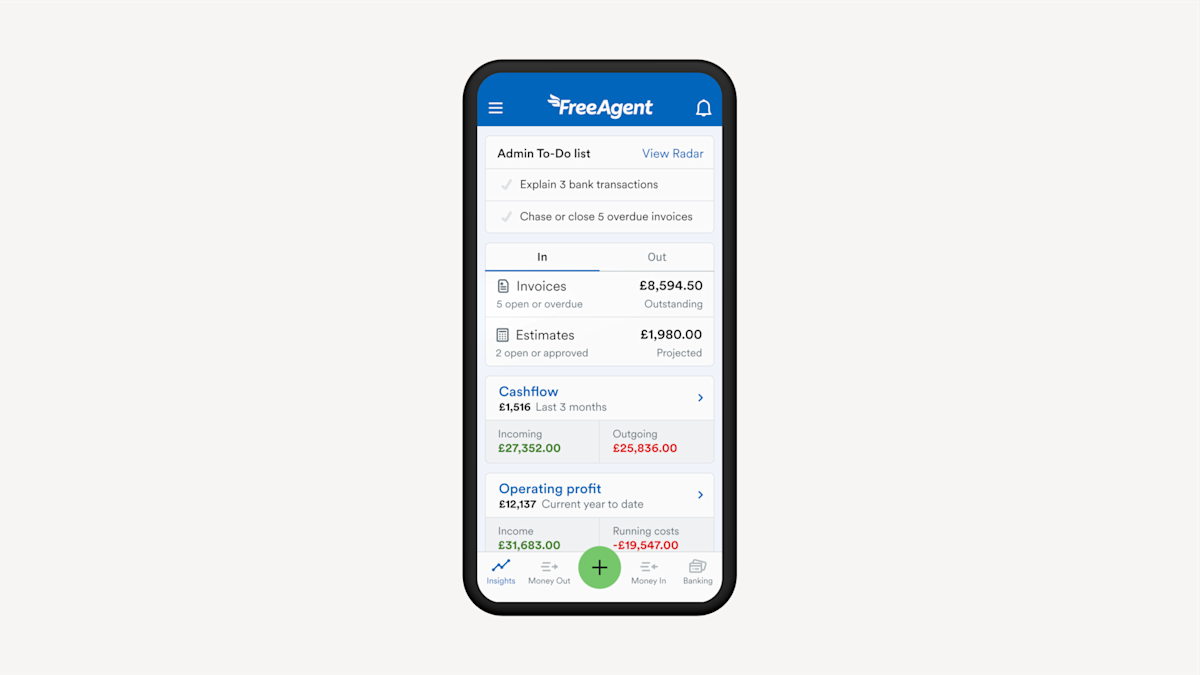These five steps include fleshing out your business idea with a bit of planning and research, how you might go about naming your business and building a brand for it. We’ll also cover the top tips on putting together your business plan, how to define what kind of legal structure you’ll have and finally the decision on whether or not you’ll need a business account for the work you’ll be doing.
Planning and researching your small business idea
You have an idea, now you will want to think about how to go about doing it. Time to put pen to paper and plan how it will become a sustainable income for you – whether to support you by itself or alongside another job.
Think about the ‘why’
Although this may seem like an irrelevant step, considering why you’ve decided to start this business will help flesh out your idea and make sure it’s thought through from every angle.
It’s a vital step in ensuring your business or side hustle has the best chance at being a success. Taking a step back and thinking about your ‘why’ will help shape what you’re going to be doing and help you understand what you’ll be putting into your business plan.
To start, consider what you want to achieve. Successful businesses solve a specific problem and fill a gap in the market. If you don’t solve a specific problem or can’t spot that gap in the market, there may still be space for you to launch your business but it will probably be a bit more difficult to turn it into a profit making venture. This is where market research can be an important tool.
Market and customer research
Customer research is reaching out to your potential target audience and testing if the idea has legs by asking questions around what you’d be offering. One way you can do this is by creating an online survey and sharing on social media, although it can be hard to get traction through this method.
Another way is by talking to people in person, for example if you wanted to invent a new way to carry your yoga mat then you could go to a yoga studio – with the owners permission of course – and ask members what they think. This should provide some invaluable feedback and determine whether or not the target audience are interested.
Market research is a way of looking into what other people in your potential business/hustle area are doing. This doesn’t need to be a complicated process with hours spent scrolling through forums and websites to find what has worked and what hasn’t. Instead it can be a simple online search to find and compare yourself against those already out there, gathering the top few examples as evidence towards what you want to do.
This is a type of competitor analysis which will come in useful when you’re putting together your business plan. Competitor analysis allows you to check out your competitors, who their customers are, what problems they’re solving and how they’re marketing their product. From that point you may be able to find a niche and identify where your offering fits in.
The type of research will depend on what your product or service might be. For example, if you wanted to create popcorn with unique flavours it can be as simple as walking into the supermarket to check out what other products are on the shelf. In which case you might spot big popcorn brands.
You can make a few notes on their pricing, their flavours and the tone of voice they use on their packaging. Once you’ve seen all this, you can then consider how your popcorn product could compete against them.
You have to decide for yourself where your business will fit, if it will be different or if it will be aimed at the same target audience and perhaps priced more competitively.
If we continue with the popcorn example, you might believe there’s new flavours the other brands haven’t got that you want to create. Or perhaps, you want to create popcorn specifically targeted at children rather than adults in which case your brand positioning and product marketing could reflect this.
Research is an essential aspect of starting a business and can help when building your business plan to establish what your idea is all about and why you’ve started it. This can also help when presenting for funding further down the line if that’s what you want to do.
Consider your finances
What can be the scariest step is trying to figure out what you can afford, the positive is that a lot of ideas can be started and tried or tested for a small cost before you might put in more funds or apply for that loan.
What you can afford will vary as everyone has their own responsibilities to manage, be it rent/mortgage, children or dependents and anything in between. The cost of your idea will also be individual, therefore it wouldn’t be appropriate to put a number on what you might need.
However, if you feel you want or need to raise funding there are a few ways to go about doing this. In no particular order you can:
Crowdfund on websites like Kickstarter, which allows customers to buy into your idea without having a physical product ready to immediately sell to people
Reach out to venture capital investors (sometimes referred to as VC investors) who invest in a way that’s similar to the way Dragons Den operates, although usually without quite as much drama
Enter competitions, there are plenty on social media or through a quick search you simply need to make sure you hit the criteria before entering
Apply for a loan, most high street lenders will have a loan for a start-up business
Entrepreneur hubs, although not necessarily a way to raise funding, places like Amazon, NatWest and others offer hubs of information and resources for people like you to build your business confidence and create networks of support
Be resilient
There are all sorts of scary statistics out there about the failure rate of small businesses. If you’ve tried applying for loans or funding before and have been rejected, it can be enough to put anyone off and chip away at your confidence. But if you’re ready to try something new then stay strong and determined, plan and discuss your business with others. Join groups like our community on facebook or the start-up business help and seek advice from others when you don’t know the best step to take.
Be creative
An aspect that hasn’t been covered yet is being creative, the more unique your business is the more it will stand out against competitors. Try to come at problems from all angles and bounce ideas off friends and family to get more than one opinion and flesh out your idea.
Next step, your business plan
It is only a very rare business that becomes an overnight success. For most it is a hard slog, putting your heart and soul into something while balancing your finances, work and any other commitments you might have, but when it all pays off the satisfaction alone makes it worthwhile.
Building a business takes time and effort, a top tip would be to share what you’re doing with people that care about you so they can help provide some motivation when you hit those tough points. There is a whole community of self-starters out there, especially now. Tap into the experiences others have had and draw on available networks for inspiration or support even if your start-ups are completely different.
Top tips for writing a successful business plan
You’ll have heard of business plans from Dragon’s Den but why is a business plan important and what are our top tips for preparing one?
A business plan is an overview of your business. It is your opportunity to share your business and explain why your business will be a success where others might fail.
Why should you write a business plan?
A good business plan will help you explain to others, and yourself, how your business works and how it will make money. Amongst other things writing a business plan can:
Make sure you understand your business. The process of writing a business plan will make you think about how you want to run your business now and in the future. It can also be a useful process to ensure you are pricing your products and services correctly and can run your business sustainably
Help investors and lenders understand your business and allow you to access funding;
Help you to sell your business to future employees and business partners
As a small business owner a business plan is a key tool so writing one and keeping it up to date will be a valuable investment of your time.
Top tips for a successful business plan:
Be specific: A business plan isn’t only about selling your vision, you’ll need to dig deeper and provide evidence of how you will deliver your plan and reach your goals. You will need to show you know your business, your market and your customers. Including relevant statistics, research and customer testimonials are just some of the ways to help you do this.
Be clear and concise: Focus on what the reader needs to know. It can be tempting to include every single detail of your business but remember lenders, investors and potential partners have limited time and only need enough information to be confident when working with you. Also don’t forget, not everyone who reads your business plan will be an expert in your field so make sure you explain any technical terms.
Know your financials: Robust financials that show how you will make money are essential, particularly if you intend to use your business plan to secure funding. You will need to be able to confidently answer any questions about any assumptions you have made in your forecasts and pricing.
Be realistic: It might be tempting to overestimate sales or exaggerate cost reductions you think you can achieve but people reading your plan will often see through these and it could lead to a cash flow crisis in future.
Make it professional: To show you take your business seriously make sure your business plan is well presented by adding a cover, structuring into sections and making sure there are no spelling mistakes.
Be honest about any risks you face: For a business plan to be useful you should include any key risks and explain how you plan to overcome them.
How to write a business plan for your small business
Creating a strong business plan is a worthwhile investment for all businesses. Even if you don’t immediately share it with anyone you can use it to set your business on the path to success by setting yourself clear objectives and it can help you spot opportunities or gaps in your planning early. It is also essential for raising finance and will be key when selling your business to new business partners, distributors or agents.
It can be difficult to know where to start when writing a business plan. Whilst your business plan can include any information you think is relevant to explain your business and why it will be sustainable, here are some key sections that you should make sure you cover:
Your business and key objectives:
Start by showing your passion for your business. Give a clear and concise overview of your business and the products or services you provide. You should look back on how you started and any key successes so far but also give an overview of your future short and long term goals. If you are using your business plan to secure funding you should also explain upfront what you will use that funding to achieve.
Don’t forget that this will be read by people who might not be experts in your field so try to avoid jargon and explain any key words.
Your target customers, market and key competition:
Show that you understand the market you operate in and describe your customer segment. When reading this people will want to understand how you identify your customer, how you know there is a market for your product or service and what makes you different from your key competitors.
Your sales and marketing plan:
This is all about how you plan to sell your product or service to your customers. Provide information about how you will spread the word to potential customers, any branding you have and how you will price and distribute your product or service.
Management structure and experience:
This is your opportunity to explain the reason why you, and anyone you partner or work with, have the right skills and experience to deliver the successful business you have described in the previous sections.
If you know you have any key skills gaps you should explain how you plan to fill them temporarily or long term.
Your business operations:
This section will vary quite a lot depending on the type of business. You should demonstrate that you can deliver the product or service you’re promising. You don’t need to detail everything about your operations but this might include an overview of:
Any premises, staff or equipment you deem essential
The key processes used in production
How you will distribute your product
Any tax or regulations that will be important to your business
In this section you can also include any risks you have identified and how you plan to manage them
Financial forecasts:
There are 3 important parts to your Financial forecasts:
Past performance: Depending on how new your business is you’ll want to show how your business has performed in the last 3-5 years. You could think of including a breakdown of your sales and profit margins as well as profit and loss and balance sheet views of your business.
Forecast: How do you expect your business to perform based on the plan you’ve described. You might also want to consider showing different scenarios and what the outcomes for your business will be.
Cash flow forecast: This tells people how much cash your business has and will help identify at what point in the future you might need any additional funding.
It’s important to be realistic about your financials and clearly state any assumptions you have made
You’ve got a business plan, now what?
These top tips are by no means an exhaustive list and the importance of each section will change depending on the type of business you’re in. Once you’ve done your research, drafted out your business plan and decided it’s feasible for you to continue working on, it’s then time to build your brand and pick a name that fits!
Choosing a name for your business
Nailing down the perfect name for your business can be tricky. You want to make sure it represents your brand in the right way. We’ve outlined some tips that could help with that and defining your brand.
With an ever increasing amount of people starting their own business or side-hustle, picking the right name and nailing your brand is more important than ever. Throughout this blog we’ll look at ways you can help ensure your name and brand bring in those customers, and sell your products or services in the right way.
The rules
Sole Trader
Make sure you know what type of business you are before you decide on a name. As a sole trader you can pick whether you trade under your own name or you go for an alternative name for your business.
When choosing a name as a sole trader you must not include ‘limited’, ‘ltd’, ‘limited liability partnership’, ‘LLP’, ‘Public limited company’ or ‘plc’. You might also want to check out this other list of phrases you need permission to use in your name, such as ‘Accredited’.
Make sure the name isn�’t offensive and isn’t the same as any existing trademarks. As a sole trader, you’re not required to register your business name, however, you must include your name and business name on things such as invoices. If you don’t want anyone else to use the same name, you should register it as a trade mark.
Limited Company
When you’re setting up as a limited company, you need to choose a name that isn’t the same as another registered company. If your name is the same or too similar to another company’s name or trademark, you may have to change it if someone makes a complaint or files a lawsuit against your company. The name of your business must also end with ‘Limited’ or ‘Ltd’ to highlight you are a limited company.
To find out more information about naming your company and making sure you haven’t got the same or a similar name as another registered company, read the gov.uk website.
The creative part
Start simple, the most memorable names are often only a word or two long. Try to avoid names that would compete for the top spot on Google, like landmarks or cities. For example, consider the size of Amazon.co.uk and the fact that it has only recently overtaken the rainforest for top search result and they were founded in 1994.
Suggestions on how to come up with a creative name:
Get creative with your own name by combining it with another name or merging them together
Use Thesaurus.com to find words similar to your product/service to spark ideas
Random Word Generator can help if you’re looking for an adjective to combine with another word
Host a brainstorming session with friends and family to bounce ideas off each other
There are naming businesses you can employ to come up with a name for you but they can be expensive
Check it out
Now you have an idea of what your name will be, you need to make sure it will hold up against what’s already out there. To do this start by searching it online and see what appears, is there someone with a similar name that you might end up competing against? Are other things popping up that you don’t want people to associate with your brand?
On top of searching online, check social media as well, especially if you plan on launching a business Instagram account or Facebook page. See if there’s anyone doing a similar thing with the name you want to use.
When registering your name either on gov.uk or as a trademark - depending on your business set-up - this should tell you whether or not there’s someone who already has the name or something similar, which you would want to avoid.
A good rule of thumb is to make sure whatever name you’ve come up with doesn’t translate into anything inappropriate in other languages, even if you aren’t planning to operate beyond the UK you don’t want your name to infer different meanings than intended.
It can be hard to find the name that’s right with a good level of individuality but stick with it and keep brainstorming new ideas until you get the one that fits. That lightbulb moment will come.
Building a brand
Once you’ve got a name you will want to think about what the rest of your branding will look like. This will vary widely depending on what your business is. A coffee shop owner will need to consider the interior decor, the signage on the front and how to promote it in the local area.
Whereas, an animator will need to focus more on promoting their services through digital channels and showcasing the brand of their portfolio effectively.
Let’s have a look at a few ways you can consider building your brand, building a website, designing a logo and how to manage your social media.
Making a website
A website can be a great way of showing customers what you’re all about, from the colour scheme you use to the information you store on it.
There’s a few choices when it comes to building a website, you can:
Do it yourself. This requires a specialist skill set to do so but it is the cheapest way and probably most customisable way to build your website
Use a website builder. Websites such as Wix, WordPress or Squarespace have a really intuitive interface and can be customised to an intricate level but services vary between platforms so do your due diligence before deciding which one is right for you
Employ a web designer. You can hire a web designer to build it for you which gives a lot of flexibility and more ownership over your website but comes with a price tag
Social media
Maybe a website isn’t for you. More and more people are finding success through social media alone and you can now sell through Instagram or Facebook without having to build or maintain a website. However, it is worth mentioning that depending on your target consumer, they may expect things such as a website.
It’s worth doing some research with social media and seeing what you like in terms of design and frequency of posting. These platforms will usually come with an analytics section which will allow you to trial and error what works on your own pages as well.
Deciding on social media and whether it's right for you will depend on your customer base, for example if you’re targeting a mature audience you will probably find there isn’t as much interaction on TikTok as there might be on LinkedIn.
Logo
Similarly to creating a website you should think about whether you need a logo. As a sole trader your face can be used as the front of the business as such sometimes a logo isn’t even necessary.
Your business area will help inform your decision, for example as a tradesperson the likelihood is you won’t benefit as much from a website, logo or social media presence as you would from word of mouth business.
However, if you have a social media presence or a website then it helps to have a logo.
As a few ideas you could design it from the initials of your name, a symbol that resonates with your brand or a customised abstract design that you like the look of. If the idea of designing your own logo strikes fear into your heart then there are plenty of businesses out there who work specifically on designing logos.
You can find them through a simple online search or you can go to websites like Fiverr which acts as a marketplace for freelancers. You can set filters to search for a budget that’s appropriate for you.
Next step
You’ve picked your name and have an idea of what your brand will look like, now you can start thinking about how to set up the structure of your business.
It’s important to classify this and to do it correctly so when it comes to tax time you have an understanding of what you need to do.
How to define what type of business you are
Are you a Sole trader? Limited company? Partnership? No idea? There are a number of different business ownership types and it isn’t always easy to figure out which one is right for your company. We’ve broken each one down to try and help.
In the UK there are a number of different types of business ownership structures that you could fall under. We’ve broken them down so that you can see which is right for you and your business.
Sole traders
To be classed as a sole trader, you need to run your own business as an individual and be classed as self-employed.
As a sole trader, you can keep all the profits your business makes, once you’ve paid tax on them, but you’re also legally liable for any losses your business makes.
To set yourself up as a sole trader you must:
Have earned more than £1,000 from self-employment in the last tax year
Be able to prove you’re self-employed
Want to make voluntary Class 2 National Insurance payments to help you qualify for benefits
Partnership
Think of doctor’s surgeries, solicitors, hairdressers and the likes. Companies where you have a group of skilled people who band together to start their own business or practice.
When you set up a partnership, there is generally a document called ‘Deed of Partnership’ that is put together to show how much each person has invested, how any profits or losses will be split and who from the partnership is responsible for things like bookkeeping etc.
In a partnership there is the added help in decision making, splitting the workload and sharing a number of other day-to-day tasks. Each partner must also pay tax and NI on their individual split of profit.
Limited company
A limited company differs from a sole trader or partnership as it is owned by the shareholders and run by appointed directors.
The limited company must be registered with Companies House and is classed as its own legal entity. This means that the company's finances and legalities are separate to that of the owners. Any profit made is the property of the company (after any taxes are paid) and only then can they be paid out to shareholders.
You can either be a limited company by shares or by guarantee. To be ‘limited by shares’ means that as a business, you generally make a profit and that the company:
Is legally separate from the people that own it
Has separate finances from the owner’s private finances
Has shares and shareholders
Is entitled to keep any profit it makes after-tax
To be ‘limited by guarantee’ means that generally, the business is not for profit and the company:
Is separate from the people that own it
Has separate finances from the owner’s private finances
Has guarantors and a ‘guaranteed amount’
Invests any profit back into the business
Franchise
Becoming a franchise is to join an already established company. It’s most common in the likes of fast food/restaurants whereby the main company (franchiser) sells the rights to use their branding and business model to a franchisee for an ongoing price.
It is an easier way of starting a business as you are given all the tools needed to get up and running (suppliers, equipment etc.) but it does come with restrictions. As part of a franchise, you might be required to turn over a proportion of profits to the franchiser and may be tied into using certain suppliers.
Freelancer
The gig economy. Another form of self-employment. Freelancers tend to be people highly skilled in their chosen area who don’t want to take on a permanent full-time role, for whatever reason.
Being a freelancer gives you the freedom to choose when and who you work for, but also set their work rates. Freelancing has been a more common type of work for a number of industries over the last few years and doesn’t seem to be slowing.
As a freelancer, you have the ability to work across several projects at any given time, compared with contractors who will commit to a fixed-term at one job/project before moving on to another.
Social enterprise
A business set up with the goal of helping society or the environment. A social enterprise must be seen to return its profits into causes that help attain its objectives of social change. There are several types of social enterprise that can be set up, such as;
Development trusts
Cooperatives
Credit unions
Housing associations
So, do you know if you’re a sole trader, a partnership or a limited company? Hopefully, this has helped you make that next step into launching your own business and getting closer to realising your dream.
You know what type of business classification you fall under, now if you would like to find out more about what a business account is, you can do so in our fifth and final step.
To learn more about Mettle click here.
Why you might need a separate business account
The thought of having a personal account and a separate business account may seem daunting. In fact it might make things a lot simpler. In this blog we break down why you might need a separate business account.
When you’re starting out as a sole trader or a limited company it’s often a good idea to set up a separate business account. Not only does it help with keeping track of your business finances compared to your personal spending, but it also allows you to keep an eye on things such as payroll, cash flow and invoices in and out of the company.
If you’re a sole trader, having a business account isn’t a requirement but as a limited company, you need to have a separate account so that you can legally hold the money as a separate entity to your personal finances.
If you haven’t yet set yourself up as a sole trader or limited company, check out our other blogs on how to do so.
Setting up a business account doesn’t need to be a slog either, some accounts just take a few minutes to apply.
Benefits of a business account
Business accounts offer a number of advantages. These can include:
The ability to have all your business transactions separate from your personal transactions and keep your business accounting simple
Process any payroll payments from the same account
Receive payments from customers
Pay invoices
To learn about a Mettle account, click here.
How to set up a business account
Setting up a business account isn’t actually as much effort as it may seem. If you’ve registered as either a sole trader or limited company then you’ll commonly need:
Proof of ID for the company directors and any PSC (people of significant control)
Proof of address
Your business details including the registered address, the Companies House registration as well as contact details for your company
You’re asked to provide this information as it helps the bank to evidence that you are who you say you are and also that your business is legit and active.
As a sole trader, it isn’t necessary to open a business account but it might be easier to manage your finances if you do. When it comes to doing your end of year accounts or tax returns, it will be more difficult and leaves more room for error when sending information to HMRC. And it’s easier to mix up your personal and business transactions if they’re all coming in and out of the same account.
How long does it take to open a business account?
Opening a business account takes a bit longer than a personal current account, as there are more checks that the bank has to perform in relation to your business itself.
Depending on the bank you are applying for an account with, the time the checks take can differ. If you're already with the same bank for your personal account, it could help speed up the process.
There are also a number of documents and questions asked throughout the application that, if provided, can help speed up the process.
How does having a business account help with my end of year accounts?
End of year accounts always seem like the biggest job but if you’re having to sift through your personal account to pick out what was a business transaction and what was personal, it’s going to take even longer.
Having a separate business account for all your spending makes it much easier to keep track of your tax and VAT for your end-of-year.
There are so many business accounts on the market now, some with different benefits to others and some that charge for the account and some that don’t. Take some time to figure out which is the best account for you before opening one.
Do they give you the ability to pay cash into a PayPoint or the Post Office? Is that something your business needs or all your payments done via an invoice?





